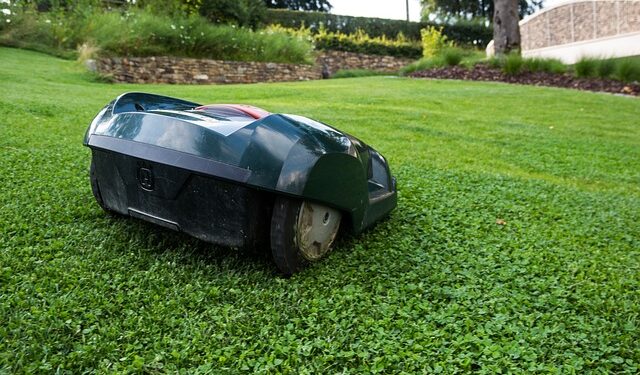When robot mowers were first introduced, they were considered cutting-edge, futuristic gadgets reserved for a small group of tech enthusiasts and wealthy homeowners. Today, they have evolved into practical, everyday lawn care tools accessible to a wide range of consumers. This transition from niche luxury products to household essentials has been driven by significant advancements in technology, cost reductions, and a growing demand for convenient solutions to time-consuming tasks like lawn maintenance. Let’s explore the fascinating journey of robot mowers and how they’ve become a practical choice for homeowners worldwide.
1. The Early Days: A Niche, Luxury Item
The concept of a robot mower as existed since the 1960s, but took true shape in the 1990s. These initial versions were often expensive, cumbersome, and limited in their capabilities. They required significant manual setup, including boundary wires, and lacked the sophisticated navigation and safety features we see today. Early adopters viewed robot mowers as a luxury item—a convenient, albeit costly, alternative to traditional mowers for those who could afford the investment.
Back then, the idea of a machine that could mow the lawn without human intervention was groundbreaking. However, the high price tag and limited functionality meant that robot mowers remained out of reach for most average households. Their reputation as luxury gadgets persisted for many years, and it wasn’t until later that advancements in technology would begin to shift the market dynamics.
2. Key Technological Advancements
The evolution of robot mowers from high-end gadgets to household staples can be largely attributed to the rapid pace of technological innovation. Early models were relatively basic, relying on physical boundary wires to mark the mowing area. However, several key advancements transformed these machines into efficient, reliable, and user-friendly lawn care tools.
- Improved navigation systems: GPS and mapping technology allow robot mowers to navigate more accurately and handle complex gardens with ease.
- Safety features: Modern robot mowers include safety measures like collision sensors and PIN code locks, making them safer for homes with children and pets.
- Battery technology: Better lithium-ion batteries enable longer run times and automatic recharging, improving efficiency and convenience.
- Smart technology integration: Robot mowers now feature app controls and voice commands, letting homeowners manage mowing schedules and monitor their lawn remotely.
3.Lowering Costs and Increasing Accessibility
This reduction in cost has been driven by economies of scale and increased competition among manufacturers. Businesses such as Ron Smith, which specialise in garden equipment, have made these technologies more accessible to the general public by offering a wide variety of models and expert advice on selecting the right one.
4. From Novelty to Necessity: A Shift in Perception
As robot mowers became more affordable and technologically advanced, public perception shifted. What was once seen as a luxury novelty became a practical household tool. Many homeowners now view robot mowers not only as a time-saver but also as an essential component of modern garden care.
The shift toward robot mowers has been driven by their time-saving convenience, environmental benefits, and ability to maintain a consistently well-trimmed lawn. Homeowners appreciate the reduced manual effort, eco-friendly operation, and healthier grass growth due to regular mowing.
Conclusion: A Lawn Care Revolution
The evolution of robot mowers from luxury gadgets to household essentials is a testament to the power of technological innovation and consumer demand for convenience. As costs have decreased and technology has improved, more homeowners are embracing the benefits of automated lawn care. Today, robot mowers are no longer reserved for a select few—they are a practical, efficient, and environmentally friendly option for maintaining a beautiful lawn.




























